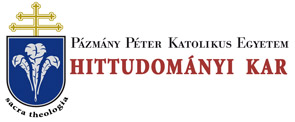Folia Theologica et Canonica, Supplementum (2016)
Hanns Engelhardt, Marriage and Divorce In Anglican Canon Law
MARRIAGE AND DIVORCE IN ANGLICAN CANON LAW 53 that such canons, constitutions, ordinances, and synodals provincial being already made, which be not contrariant or repugnant to the laws, statutes, and customs of this realm, nor to the damage or hurt of the king’s prerogative royal, shall more still be used and executed as they were afore the making of this Act, till such time as they be viewed, searched or otherwise ordered and determined by the said two-and-thirty persons, or the more part of them, according to the tenor, form and effect of this present Act.9 The empowerment of this Act was reiterated in 1549 by “An Act that the King’s Majesty may nominate and appoint two-and-thirty Persons to peruse and make Ecclesiastical Laws”10 with the purpose “to compile such ecclesiastical law as should be thought by him his council and them convenient to be practiced in all the spiritual courts of the realm”.11 This time it should be completed within 3 years; this, however, didn’t happen, and the time-limit was not extended12. A code was indeed framed but for procedural reasons not enacted.1’ It may be possible to say that it reflected “the opinions and the aims of a considerable section of influential churchmen”;14 however, it appears that no attempt was made to put the provisions of this Reformatio Legum Ecclesiasticarum into practice. Had this code been enacted it would indeed have introduced a comprehensive code replacing the earlier law and especially regulating matrimonial law, generally in accordance with the principles of the Continental Reformation. This regulation was contained in the sections De Matrimonio, De Gradibus in Matrimonio Prohibitis and De Adulteriis et Divortiis. However, these regulations were never enacted, neither during the reign of Kings Henry VIII and Edward VI, nor of course in the years of Queen Mary I. Early in the reign of Queen Elizabeth I another attempt was made to get the draft code enacted; but it failed and was not revived. This does not mean, of course, that the Reformatio was without any significance. It did indeed reflect the opinion of a considerable part of the theologians of the time who were strongly influenced by the Continental Reformers.15 But the proposed regulations never became the law in force, and the ecclesiastical courts continued to rely on the old canon law. ’ Gee, H. - Hardy, W. J., Documents Illustrative of English Church History, London 1896. 200. '* 3 & 4 Edw VI c. 11. 11 Cardwell, E., The Reformation of the Ecclesiastical Laws as Attempted in the Reigns of King Henry VIII. King Edward VI. and Queen Elizabeth, Oxford 1850. vii. 12 Mortimer, R. C., Western Canon Law, London 1953. 60. 13 Cf. Cardwell, E„ The Reformation of the Ecclesiastical Laws, vii-xii. 14 Winnett, A. R., Divorce and Remarriage in Anglicanism, London-New York 1958. 35. 15 Winnett, A. R.. Divorce and Remarriage in Anglicanism, 35; cf. Chapman, M., Anglican Theology, London 2012, passim.
